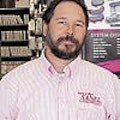A few months ago I wrote about the new emissions testing system here in New Hampshire. It seemed like a fairly straightforward system that reports the vehicle’s on-board diagnostic (OBD) test results. My final thoughts were that I’ve never seen a problem the government couldn’t make worse, but they seemed to have gotten it right this time.
How wrong I was.
The emissions test is for only 1996 and newer OBDII vehicles, but the state’s safety inspections must also be processed through this system. While practicing on one of the system’s computers, I got the feeling they’re not suitable for the job. Fifteen steps are needed to enter the safety inspection data. Each step requires a pass/fail notation and an explanation of any repairs.
Depending on the technician’s keyboard skills and honesty, data entry can take anywhere from 90 seconds to 15 minutes or more. A single keystroke will accept and pass all inspection items, which is where the state’s 90-second estimate comes from. In addition to this, the hardware as supplied can only be used in one service bay because of cord lengths. This has created a bottleneck in many larger shops, further slowing down the process.
Since safety inspections must be processed through the computer, even shops that only work on motorcycles or heavy trucks with no OBD capability are required to use this system; this includes all state and local municipal garages as well. Unlike other states, there is no limit to how much a customer must spend for repair. Vehicles that fail and are not repaired and retested within 60 days will have their license plates confiscated by the state.
Garages don’t make money doing safety inspections alone. The average fee was around $20, and a proper inspection took about 45 minutes before this system went into effect. Even at that rate, an inspection with no repairs costs a shop more than two-thirds of their hourly labor rate. This barely covers shop costs, let alone the system’s lease fees and high-speed Internet access. The $50 per month lease fee includes 15 inspections. Additional inspections cost $3.40 each. Most shops have doubled their inspection fees just to cover costs, and some have threatened to go higher.
I can’t blame them. This system was a bureaucratic end-run around the state legislature by the Department of Motor Vehicles. They tried to implement a data collection system before and were denied state funding, so they did it under the guise of complying with the federal Clean Air Act. They might have gotten away with it too if not for the public outcry over the price increases. The state is now considering whether to delay full implementation until the details can be ironed out, or scrapping it entirely and risk losing $8 million in contract fees and possibly federal highway funds too.
As a consumer and taxpayer, my interest is in what this will cost me in the end. As a parts salesman, I can only believe that OBD testing will be good for business, and as a citizen concerned about clean air, I think testing is necessary. As a member of the automotive parts and service industry, however, I’m much more concerned about how we are perceived by the public in all of this. We have worked hard to project and maintain an image of professionalism. When the director of the DMV stands up in an open state Senate hearing and pounds on her desk while accusing shop owners of gouging the public by charging for their actual time and costs, it’s a personal insult to all of us.
About the Author
